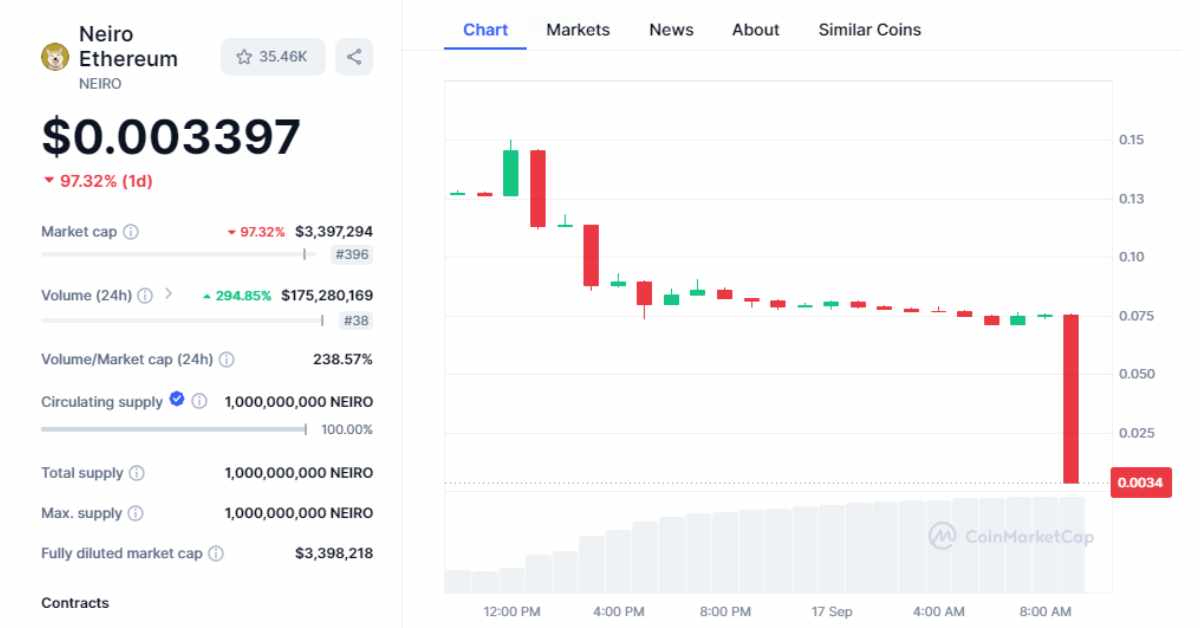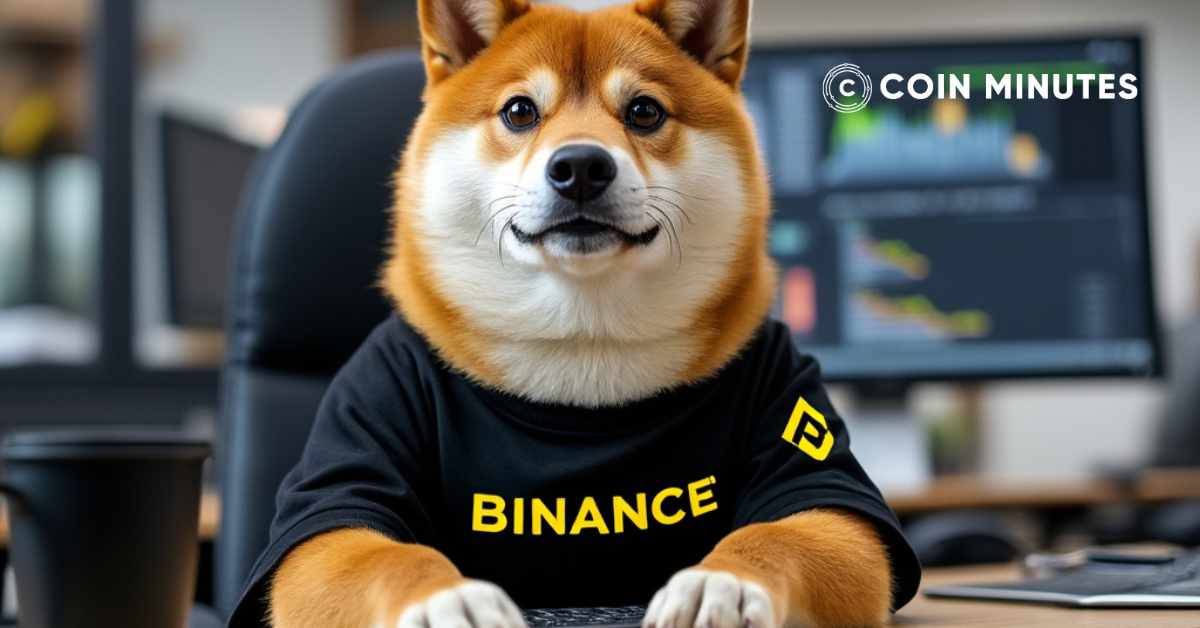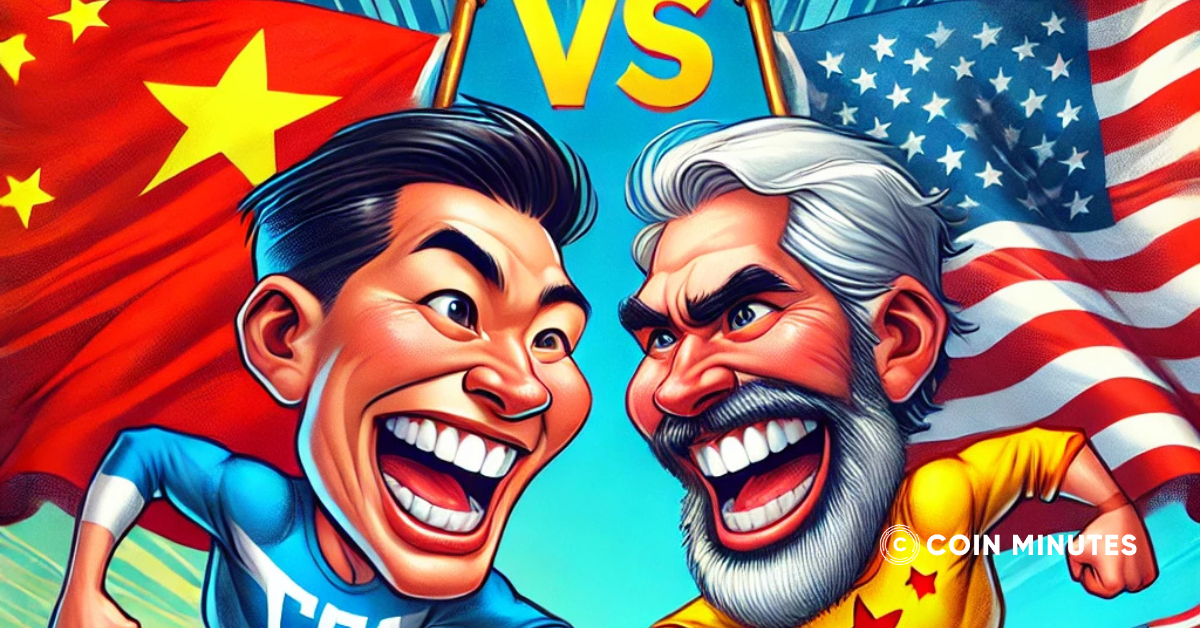On September 16, Binance, one of the world’s largest cryptocurrency exchanges, announced the listing of three new tokens: First Neiro on Ethereum (NEIRO), Turbo (TURBO), and Baby Doge Coin (1MBABYDOGE). These tokens belong to Binance’s “Seed Tag” category, which designates high-potential yet volatile and risky projects.
The decision to list these tokens, all of which are memecoins, sparked immediate controversy within the crypto community. Memecoins, often seen as having no intrinsic value or problem-solving utility, have previously faced criticism for their speculative nature.
Confusion Surrounding NEIRO
Particularly concerning is the listing of NEIRO, which is confusing due to the existence of multiple tokens under the same name across different blockchains, such as Ethereum, Solana, and TRON. The controversy stems from the fact that there are two prominent NEIRO tokens: Neiro Ethereum, which Binance listed for futures trading earlier, and First Neiro on Ethereum, which was newly listed for spot trading.
Following the listing, the price of First Neiro on Ethereum skyrocketed by 600%, while Neiro Ethereum saw a more modest increase before plummeting as investors realized the difference between the two tokens. The confusion frustrated many investors, with some accusing Binance of misleading the market.

Community Reactions and Binance Criticism
The crypto community quickly took to social media, expressing their frustration. Prominent Binance supporters expressed confusion over the listings, questioning which NEIRO token was listed. Others criticized Binance for what they saw as indiscriminate token listings, especially those with low market capitalization.
Wait what? Which neiro got listed on spot binance?
— Bull.TRX (@bull_bnb) September 16, 2024
This backlash comes at a time when Binance is already under scrutiny. Many users are awaiting the return of former CEO Changpeng Zhao, who is set to be released from a four-month prison sentence at the end of September. Some speculate that Zhao would not have approved of such listings under his leadership, pointing fingers at current CEO Richard Teng.
Leaked Information and Binance’s Response
Further fueling the controversy, rumors have circulated that the listing of these three memecoins was leaked before the official announcement. Screenshots have emerged showing information about the tokens being shared as early as September 15, though Binance has not yet confirmed the authenticity of these leaks.
币安老鼠仓真6。@binance so corruption now, someone know they gonna list 15m MC token one day before. @SECGov @GaryGensler pic.twitter.com/IrPcGdhF3O
— Dr.Hash“Wesley” (@CryptoApprenti1) September 16, 2024
Unofficial statements allegedly attributed to Binance co-founder Yi He have also surfaced. According to these rumors, she defended the listings, stating that they reflect current market trends, divided into segments like airdrop-focused minigames, infrastructure projects, and memecoins.
However, with no official statement from Binance, the investor community remains unsettled, eagerly awaiting clarification from the exchange.
The controversy surrounding these listings has led many to question Binance’s decision-making process and commitment to maintaining high standards for listed projects.
Related news: Binance Launches 59th Project, Catizen (CATI), on Binance Launchpool








